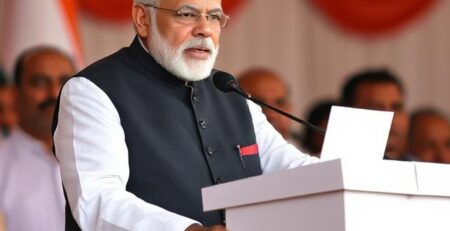Top 10 Economies in the World by PPP in 2025: A Comprehensive Analysis
Introduction
The global economic landscape is undergoing a profound transformation, with Purchasing Power Parity (PPP) emerging as a crucial metric for comparing the economic strength of nations. Unlike nominal GDP, which measures output based on current exchange rates, PPP adjusts for price level differences across countries, offering a more accurate reflection of real living standards and domestic market size. In 2025, the top 10 economies by GDP (PPP) highlight not only the dominance of traditional powers but also the remarkable ascent of emerging markets, particularly in Asia.
This article provides an in-depth exploration of the world’s largest economies by GDP (PPP) in 2025, analyzing their growth trajectories, underlying drivers, and the broader implications for global economic power.
Understanding GDP (PPP): The Metric Behind the Rankings
Purchasing Power Parity (PPP) is a method used to determine the relative value of different currencies, adjusting for the cost of living and inflation rates. It answers the question: How much would a similar basket of goods and services cost in different countries? By using PPP, economists and policymakers can compare the economic output and living standards of nations more meaningfully.
Key reasons PPP matters:
- It reflects real domestic purchasing power.
- It neutralizes distortions caused by volatile exchange rates.
- It offers better insight into market potential for businesses and investors.
The Top 10 Economies by GDP (PPP) in 2025
According to the latest IMF data and global economic forecasts, the top 10 economies by GDP (PPP) in 2025 are as follows:
| Rank | Country | GDP (PPP) in Trillion USD (2025) |
|---|---|---|
| 1 | China | $39.44 – $40.72 |
| 2 | United States | $29.17 – $30.51 |
| 3 | India | $16.02 – $17.65 |
| 4 | Russia | $6.91 – $7.19 |
| 5 | Japan | $6.57 – $6.77 |
| 6 | Germany | $6.02 – $6.17 |
| 7 | Brazil | $4.70 – $4.89 |
| 8 | Indonesia | $4.66 |
| 9 | France | $4.36 – $4.49 |
| 10 | United Kingdom | $4.28 – $4.42 |
Note: Ranges reflect slight variations in estimates across sources and updates.
In-Depth Profiles: The Top 10 World Economies by PPP
1. China: The World’s Largest Economy by PPP
- GDP (PPP): $39.44 – $40.72 trillion
- Share of Global GDP (PPP): Over 18%
- Growth Drivers: Rapid industrialization, massive domestic market, global manufacturing hub, tech innovation
China’s rise to the top of the PPP ranking is a testament to its sustained economic reforms, export-led growth, and increasing domestic consumption. By 2025, China’s GDP (PPP) is projected to be 1.3 times that of the United States, solidifying its position as the world’s largest economy by this metric. The country’s focus on technology, infrastructure, and green energy is expected to further boost its economic clout.
“China tops the list of the top 10 countries with highest GDP (PPP) for 2025. According to the latest IMF estimates, China’s GDP (PPP) will be $39,438 billion in 2025.”
2. United States: Still a Global Economic Powerhouse
- GDP (PPP): $29.17 – $30.51 trillion
- Share of Global GDP (PPP): ~14%
- Growth Drivers: Advanced technology, financial markets, consumer spending, innovation
Despite being overtaken by China in PPP terms, the United States remains the world’s largest economy by nominal GDP and continues to lead in innovation, finance, and higher education. Its robust institutions and entrepreneurial culture underpin its enduring economic strength.
3. India: The Fastest-Growing Major Economy
- GDP (PPP): $16.02 – $17.65 trillion
- Share of Global GDP (PPP): ~7%
- Growth Drivers: Young population, services sector, digitalization, economic reforms
India’s rapid ascent to the third spot is driven by a burgeoning middle class, digital transformation, and a dynamic services sector. With a projected annual growth of over 6%, India is expected to further narrow the gap with the US in the coming years.
“India is already the world’s third largest economy in GDP (PPP) terms!”
4. Russia: Resource-Rich and Resilient
- GDP (PPP): $6.91 – $7.19 trillion
- Growth Drivers: Energy exports, natural resources, regional influence
Russia’s economic strength in PPP terms stems from its vast natural resources, particularly in oil and gas. Despite geopolitical challenges and sanctions, Russia maintains a significant position in the global economy.
5. Japan: Advanced Technology and Stability
- GDP (PPP): $6.57 – $6.77 trillion
- Growth Drivers: High-tech manufacturing, innovation, stable institutions
Japan’s mature economy is characterized by advanced technology, strong export sectors, and a high standard of living. While demographic challenges persist, Japan remains a key player in global trade and innovation.
6. Germany: Europe’s Economic Engine
- GDP (PPP): $6.02 – $6.17 trillion
- Growth Drivers: Manufacturing, engineering, exports, EU leadership
Germany stands as Europe’s largest economy, renowned for its engineering prowess and export-oriented industries. Its leadership within the European Union further amplifies its global influence.
7. Brazil: Latin America’s Largest Economy
- GDP (PPP): $4.70 – $4.89 trillion
- Growth Drivers: Commodities, agriculture, services
Brazil’s economic size in PPP terms reflects its vast natural resources, agricultural output, and growing services sector. It is the leading economy in Latin America and a key player in global food and energy markets.
8. Indonesia: Southeast Asia’s Rising Star
- GDP (PPP): $4.66 trillion
- Growth Drivers: Demographics, digital economy, commodities
Indonesia’s large population and expanding digital economy are propelling its rapid growth. As the largest economy in Southeast Asia, Indonesia is increasingly important in regional and global supply chains.
9. France: Diversified and Developed
- GDP (PPP): $4.36 – $4.49 trillion
- Growth Drivers: Services, luxury goods, tourism
France’s diversified economy benefits from strong sectors in finance, luxury goods, and tourism. Its role within the EU and global diplomacy enhances its economic standing.
10. United Kingdom: Global Financial Center
- GDP (PPP): $4.28 – $4.42 trillion
- Growth Drivers: Financial services, innovation, trade
Despite Brexit-related challenges, the UK remains a global financial hub and maintains its place among the world’s top economies by PPP.
Comparative Table: Nominal GDP vs. GDP (PPP) 2025
| Country | Nominal GDP (Tn USD) | GDP (PPP) (Tn USD) |
|---|---|---|
| United States | $30.34 | $30.34 |
| China | $19.53 | $39.44 |
| India | $4.27 | $17.36 |
| Germany | $4.92 | $6.17 |
| Japan | $4.39 | $6.77 |
| UK | $3.73 | $4.42 |
| France | $3.28 | $4.49 |
| Italy | $2.46 | $3.69 |
| Canada | $2.33 | $2.69 |
| Brazil | $2.31 | $4.89 |
Source: IMF, Investopedia (2025 projections)
Key Trends and Insights
1. Asia’s Economic Rise
Asia dominates the PPP ranking, with China, India, and Indonesia all in the top 10. This reflects the region’s large populations, rapid urbanization, and increasing integration into global value chains.
2. Emerging Markets Gaining Ground
Countries like India, Brazil, Indonesia, and Russia are closing the gap with developed economies, driven by demographic dividends, resource endowments, and economic reforms.
3. The Shift from West to East
While the US and Europe remain economic powerhouses, the center of global economic gravity is shifting eastward, with China and India projected to further increase their share of global GDP (PPP) in the coming decades.
4. Impact of PPP on Global Strategy
For multinational corporations and investors, PPP-adjusted GDP offers a more realistic assessment of market size and consumer potential, influencing decisions on market entry, pricing, and investment.
The Broader Implications of PPP Rankings
1. Policy and International Relations
Countries with higher GDP (PPP) wield greater influence in international organizations such as the G20, IMF, and World Bank. PPP rankings can impact voting power, aid allocation, and global governance structures.
2. Business and Investment
A country’s position in the PPP ranking signals its market potential and cost competitiveness. For instance, India’s rapid rise attracts foreign direct investment in sectors like technology, manufacturing, and services.
3. Development and Living Standards
While high GDP (PPP) indicates economic size, it does not automatically translate to high per capita income or equitable development. Policymakers must balance growth with inclusivity and sustainability.
Challenges in Comparing Economies by PPP
- Data Variability: PPP estimates can vary across institutions due to different methodologies and data sources.
- Structural Differences: Economies differ in structure, development stage, and openness, complicating direct comparisons.
- Currency Fluctuations: While PPP adjusts for price levels, sudden currency shifts can still impact economic assessments.
Future Outlook: Who Will Lead the Global Economy?
Projections suggest that by 2030, China and India will further consolidate their positions atop the PPP ranking, with Southeast Asia and Africa also rising in prominence. The US and Europe will remain influential, but their relative share of global GDP (PPP) will likely decline as emerging markets grow faster.
Conclusion
The top 10 economies in the world by PPP in 2025 reflect a dynamic and evolving global order. China’s dominance, India’s rapid ascent, and the resilience of established powers like the US, Japan, and Germany underscore the complexity of international economics. For policymakers, businesses, and investors, understanding these rankings—and the forces behind them—is essential for navigating the opportunities and challenges of the 21st century.
Key Takeaways:
- China leads the world in GDP (PPP), followed by the US and India.
- Emerging markets are rapidly gaining ground, reshaping global economic power.
- PPP rankings provide a more accurate picture of real economic strength and market potential.
As the world continues to change, tracking GDP (PPP) will remain vital for understanding the true balance of global economic power.












